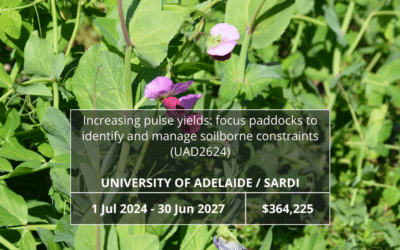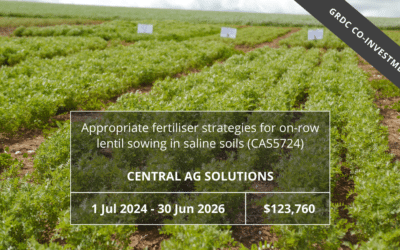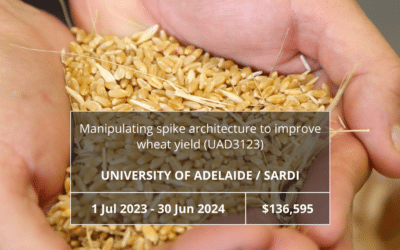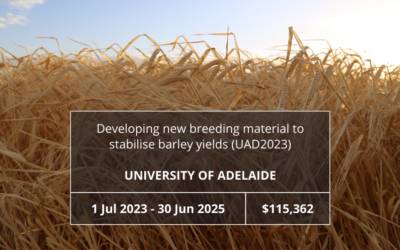This project will assist South Australian growers to increase pulse yields by managing paddock variation associated with soil biotic and abiotic constraints. Data generated will also form the foundation for a decision support model. Focus paddocks will be mapped for pathogen levels and rhizobia as well as physical characteristics including pH, salinity and soil type. These factors will be related to remote sensing imagery and yield maps to determine the drivers of variation.
Posts Tagged - yields
Appropriate fertiliser strategies for on-row lentil sowing in saline soils (CAS5724)
Jul 11, 2024 | Current Projects
This project aims to determine the residual benefit of on-row and off-row sowing and appropriate fertiliser strategies for sensitive lentil crops in phosphorus deficient and moderately saline calcareous soil types of Yorke Peninsula. Research will investigate management techniques of utilising residual phosphorous in a cereal phase along with phosphorous placement at seeding to optimise lentil grain yields and economic returns. This project is a co-investment, with GRDC providing 50% of the total funding.
Manipulating spike architecture to improve wheat yield (UAD3123)
Nov 23, 2023 | Current Projects
This project will be undertaken by SARDI researchers who will use a novel bread wheat mapping population and high-throughput phenotyping method (X-ray computed tomography) to measure spike traits that contribute to yield, and identify genetic markers associated with improved yield for breeding programs. This project includes controlled environment studies and field trials.
Developing new breeding material to stabilise barley yields (UAD2023)
Nov 23, 2023 | Current Projects
South Australian crops can be severely impacted by poor and variable growing conditions, which includes low-fertility soils. Crop plants possess strong instincts to reduce grain number due to variable growing conditions or reduced fertiliser. This is a major contributor to the yield gap in SA. This project seeks to help close this yield gap through the import and testing of new genetic material that makes barley less responsive to environmental conditions.
Latest Media
- Strategies for mitigating frost damage in the Upper North region (UNF1724)
- An improved and rapid test to inform sodic soil management (UAD4624)
- Increasing pulse yields: focus paddocks to identify and manage soilborne constraints (UAD2624)
- Multi-scale monitoring of pests and beneficial insects in canola cropping (UAD1424)
- The impact of annual ryegrass seed size on harvest weed seed control mill efficacy (TCO6424)




